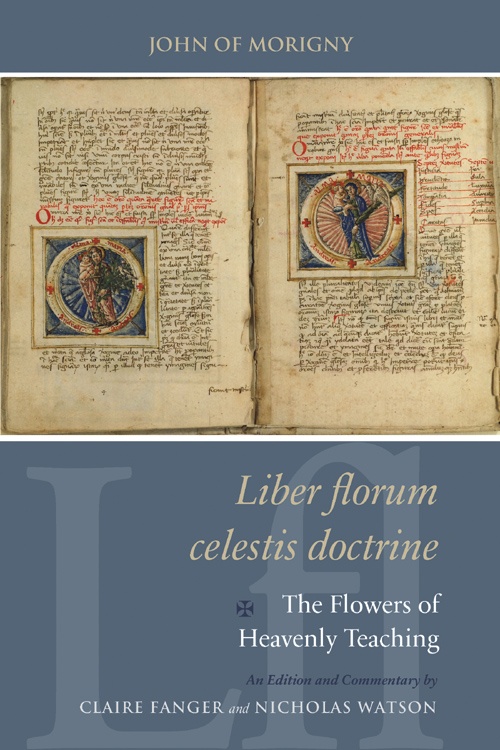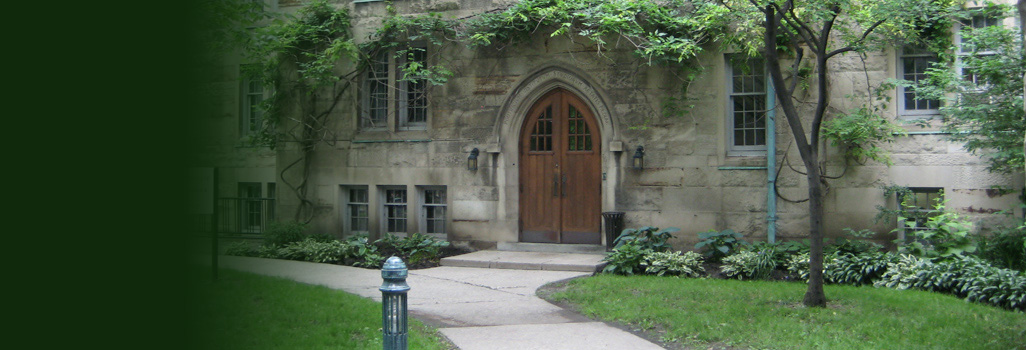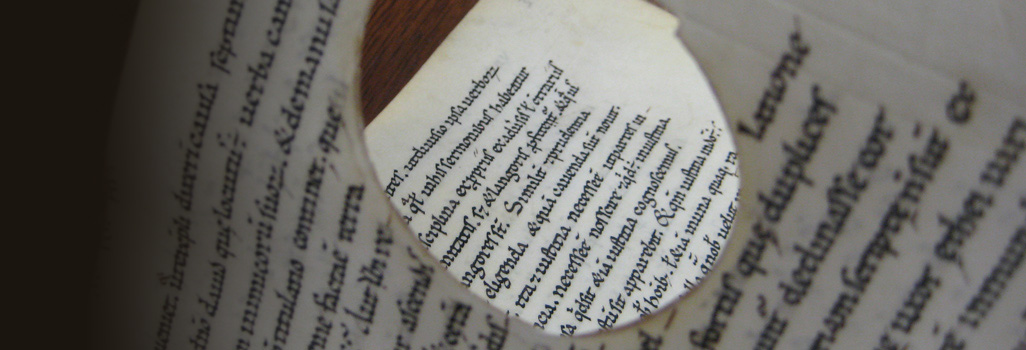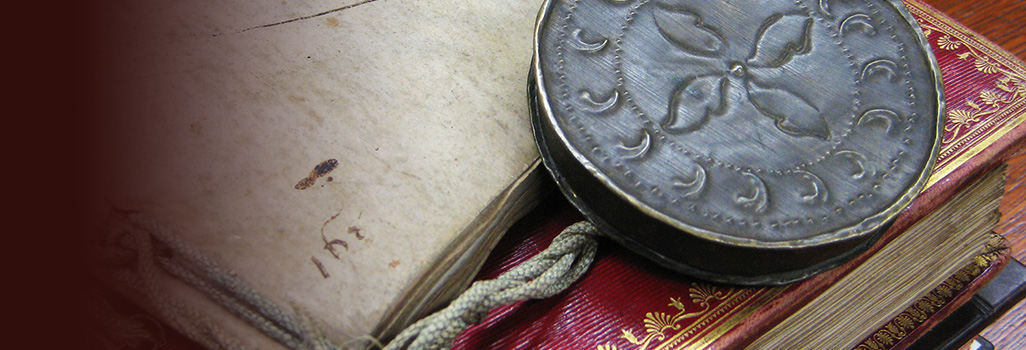
John of Morigny. Liber florum celestis doctrine / The Flowers of Heavenly Teaching
Studies and Texts 199. xxii, 632 pp., plus 8 colour plates. 2015. ISBN 978-0-88844-199-7 • Cloth • $115
This volume provides the first edition and systematic study of the Liber florum celestis doctrine by the Benedictine John of Morigny. Until recently this work was known only through a chronicle report of its burning at Paris in 1323, on the grounds that it revived a condemned ritual called the Ars notoria. However, it survives in three versions in more than twenty copies from across Europe, few of which indicate doubt as to its orthodoxy.
The Liber florum has at its core a Book of Prayers, written at the University of Orléans between 1301 and 1308, which models an angelic ascent to the court of heaven. The Book of Prayers promises infused knowledge of the liberal arts and other disciplines to operators who obtain the Virgin’s license to use it. It also enables them to petition the Virgin for visionary dreams in which she may respond to specific questions.
After assuming a high-ranking position as provost of Morigny in 1308, John continued to elaborate his work. By 1315 he had added two versions of a Book of Figures, sending out new materials in instalments to a growing circle of followers, including secular priests as well as professional religious. He had also added a Book of Visions, which narrates his journey from sin to redemption as well as that of his sister, Bridget. Here he describes his first vision of the virgin Mary at Chartres, his later magical practices, his encounters with demons, and his ultimate rejection of magic arts under the Virgin’s protection.
An intimate visionary collaboration between human and divine, the Liber florum will be of interest to all students of the middle ages, especially those interested in university learning, monasticism, liturgy, mysticism, visions, magic, and book history.
Editors
Claire Fanger teaches in the department of Religion at Rice University, where she works on Latin Christianity in the later middle ages and on the history of magic, especially angel magic. She has published other interpretive work on John of Morigny including a book, Rewriting Magic (2015), and a number of articles. She has also written on medieval Latin philosophical epics by Alan of Lille and Bernard Silvestris, on the poet John Gower, and on figures in the nineteenth- and twentieth-century occult revival. She has edited two collections of essays on texts and manuscripts of magic in the middle ages: Invoking Angels (2012) and Conjuring Spirits (1998). Among her current projects is an English translation of John’s Flowers of Heavenly Teaching (also with Nicholas Watson).
Nicholas Watson teaches medieval literature and the history of Christianity at Harvard University. He is the author of Richard Rolle and the Invention of Authority (1991). He edited The Idea of the Vernacular: An Anthology of Middle English Literary Theory 1280–1520 (1999) with Jocelyn Wogan-Browne and others, and The Writings of Julian of Norwich (2006) with Jacqueline Jenkins. He is editor or co-editor of four other books, and author of some fifty articles on late medieval religious writing, mysticism, visions and visionaries, historical sociolinguistics, and literary theory. At present, he is in the process of completing a monograph, Vernacular Theology Before the English Reformation: Balaam’s Ass, and an English translation of John of Morigny’s work (also with Claire Fanger).
Endorsements
“The Liber florum is a remarkable discovery, and this painstaking edition lays the foundation for the study it so deserves. A magical-devotional text, condemned yet widely dispersed and used, it is dauntingly rich and complex, daringly inventive yet deeply grounded in several traditions. Arising from a hybrid late medieval monastic-scholastic environment, it weaves together visionary formulas with magical practices. The author, John of Morigny, was something of a tormented genius who left ample evidence of his own travails within his text. Claire Fanger and Nicholas Watson have carried out with remarkable success the task of establishing the text in its successive and fluid versions, then interpreting the work and tracing its influence.”
RICHARD KIECKHEFER
Northwestern University“This exemplary edition, the result of a long collaboration, makes an important contribution to the devotional literature of the fourteenth century. In his remarkable book John described how to attain knowledge of the arts and sciences through combining prayers, rituals, figures, and visions. Though burned in Paris in 1323 for its use of ritual magic texts, the Liber florum celestis doctrine survived to be copied for hundreds of years after its composition between 1301 and 1315/1316. This first edition offers the entire text of the New Compilation (1315), complete with explanatory notes that supply its intellectual background and highlight its internal structure. In the introductory chapters, Nicholas Watson digs through the various strata of the work to extract evidence that offers insights into the evolution of John’s thought and his book. Equally revealing is Claire Fanger’s scrutiny of the known manuscripts to track the work’s origins, development and afterlife, in which it was re-used and redacted by others.”
CHRISTOPHER McDONOUGH
University of Toronto
Ordering
Detailed information about ordering, including sales territories and methods of payment, is available on our ordering page. PIMS books are also available on Amazon.ca (for Canadian customers) and Amazon.com (for customers in the U.S.).


